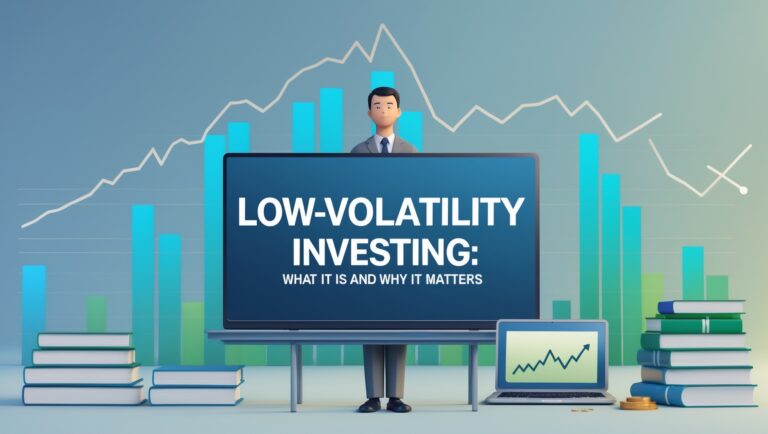How to Make Your First Stock Purchase Online
How to Make Your First Stock Purchase Online
Learn how to make your first stock purchase online with step-by-step guidance. I share my personal experience, beginner tips, and tools that helped me start investing safely and confidently.

Table of Contents
Making your first stock purchase online can feel intimidating. I remember feeling overwhelmed when I first logged into my brokerage account—so many options, charts, and numbers everywhere! But once I understood the process and had a clear plan, it became straightforward.
If you’re a beginner investor, this guide will help you make your first stock purchase online safely, confidently, and efficiently. I’ll also share tools and resources I personally use to grow my portfolio and even pay bills with my investments.
If you want a complete step-by-step guide, check out my ebook here: Grab it here.
Step 1: Choose a Reliable Online Brokerage
The first step is to select a brokerage platform that is secure, beginner-friendly, and offers low fees. I personally use:
- Robinhood (join here) – great for beginners, simple interface
- Webull (start here) – more advanced tools once you’re ready
- TradingView (sign up here) – to track stock charts and trends
I started with Robinhood because it made buying my first stock easy, with simple navigation and helpful resources.
Step 2: Fund Your Account
Once your account is set up, you need to deposit funds. I recommend:
- Start with an amount you can comfortably invest, even $50–$100
- Avoid using emergency funds
- Consider setting up automatic monthly deposits for consistent investing
Funding your account gives you the flexibility to buy stocks when you spot the right opportunity.
Step 3: Choose Your First Stock
Selecting your first stock can feel overwhelming. I suggest starting with:
- Large, well-established companies with consistent growth
- Dividend-paying stocks for passive income
- ETFs or index funds to diversify automatically
Before buying, research the stock: look at its fundamentals, price trends, and recent news. I personally use TradingView to analyze charts and understand trends (sign up here).
Step 4: Decide How Many Shares to Buy
I recommend starting small. You don’t need to buy a lot of shares to begin investing.
- Calculate how many shares fit within your budget
- Consider fractional shares if available
- Focus on consistent investing rather than large one-time purchases
This approach helped me start safely and gradually build confidence in my investments.
Step 5: Place Your First Order
Placing an order is easier than most beginners think. Here’s how I do it:
- Log in to your brokerage account
- Select the stock you want to buy
- Choose the order type:
- Market order: Buy immediately at current price
- Limit order: Buy only at a specific price you set
- Enter the number of shares
- Review and confirm your purchase
I always double-check my order before submitting to avoid mistakes, especially when buying my first stock.
Step 6: Track Your First Stock
After buying, I make it a habit to track my investment regularly, without obsessing over daily fluctuations.
- Monitor performance weekly
- Check dividends and news related to your stock
- Compare performance against your goals
Tracking your stocks helps you make informed decisions for future purchases and avoid emotional selling.
Step 7: Learn and Improve
Your first stock purchase is a learning experience. I made mistakes early on, but each trade taught me something valuable.
- Learn from successes and losses
- Adjust your strategy gradually
- Use educational resources provided by your broker
- Follow your long-term investment plan
I also use my ebook for structured guidance on growing wealth and paying bills with stocks (get it here).
Step 8: Consider Automatic Investments
To make investing easier and consistent, I use automatic investments.
- Set up recurring purchases of stocks or ETFs
- Dollar-cost averaging reduces the impact of market fluctuations
- Helps build your portfolio steadily over time
This approach removed a lot of stress and helped me grow my investments safely.
Step 9: Stay Patient and Consistent
Investing is a long-term game. I remind myself not to panic during market dips and focus on my long-term goals.
- Review your portfolio monthly
- Reinvest dividends when possible
- Avoid emotional decisions
Over time, this patience and consistency allowed me to grow my portfolio and even use dividends to pay bills, as explained in my ebook (grab it here).
Step 10: Final Thoughts
Making your first stock purchase online is simpler than it seems if you follow the right steps:
- Choose a reliable brokerage
- Fund your account with money you can invest
- Research and select your first stock carefully
- Decide how many shares to buy
- Place your order with confidence
- Track your investment regularly
- Learn from your experience
- Consider automatic investments
- Stay patient and consistent
If you want to start investing confidently, here are the resources I personally use:
- My Ebook: Pay Bills With Stocks
- Robinhood Affiliate Link
- Webull Affiliate Link
- TradingView Chart Analysis
Start your first stock purchase online today—safely, confidently, and strategically, just like I did.
One thing I quickly realized is that education never stops in investing. Even after making my first stock purchase online, I kept reading articles, watching tutorials, and following market trends. Knowledge became the foundation for safer and smarter investing.
When I made my first purchase, I started keeping a journal of every trade—the stock, the price, my reasoning, and even my emotions. Looking back, this practice helped me understand mistakes and refine my strategies.
I’ve also found that joining investment communities online can be incredibly helpful. Being able to ask questions, share ideas, and learn from experienced investors gave me confidence in my decisions.
Patience is one of the hardest lessons for a new investor. When I first started, I often wanted to see immediate returns. Learning to wait and trust my research made a huge difference in my portfolio’s growth.
Understanding the difference between short-term fluctuations and long-term trends is crucial. I remind myself daily not to panic when a stock dips slightly, as long-term potential remains strong.
I make it a habit to read company news and earnings reports regularly. This helps me stay informed about factors that could affect my stocks and allows me to make proactive decisions.
Tracking dividends has been a game-changer for me. Seeing my investments generate small, steady income over time motivated me to reinvest and grow my portfolio further.
I also learned the importance of diversification early on. Holding multiple stocks across different sectors reduced my overall risk and helped me sleep better at night knowing I wasn’t overly exposed to a single company.
One of the strategies I love is dollar-cost averaging. Consistently investing a fixed amount over time helped me avoid the stress of trying to “time the market” perfectly.
Using alerts and notifications for price changes keeps me informed without obsessively checking the market. I can act when opportunities arise while still focusing on my day-to-day life.
I discovered that even small investments matter. Starting with modest amounts allowed me to gain experience, build confidence, and see my portfolio grow without risking too much upfront.
I take time to reflect on my investment decisions each month. Reviewing what worked and what didn’t helps me improve my strategy and avoid repeating mistakes.
Learning how to read charts was intimidating at first, but gradually it became one of my favorite tools. Understanding trends and patterns helps me make more confident purchases.
I also experiment cautiously with new stocks, but only after thorough research. This balance of careful exploration and consistency keeps my portfolio growing safely.
Finally, I remind myself that investing is a journey, not a sprint. Every stock purchase, whether big or small, teaches me more about the market, about risk management, and about my own decision-making.

Stay ahead in the stock market! Subscribe to our newsletter and receive exclusive stock flow reports, trading insights, and actionable tips directly in your inbox. Join thousands of traders who get our updates first.







